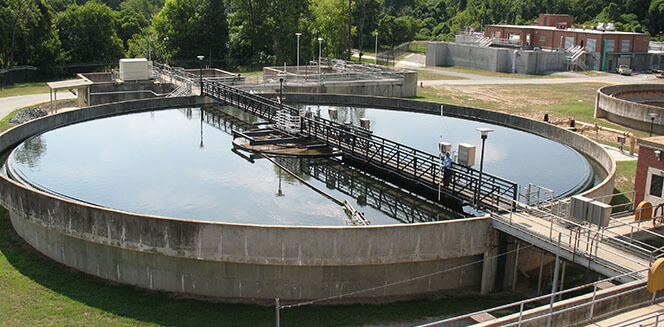Ecological Concerns at the Center of Sludge Treatment Chemicals Market

1 Mar
2016
Raw water is a heterogeneous mixture of sundry macro-, and micro- components. Before it is fed into plants for industrial use or domestic redistribution, it is necessary to modulate the level of these components as per safety standards. The agents utilized throughout solid accumulation and its destruction, comprise Sludge Treatment Chemicals Market. Class of chemicals keep varying with different sludge composites. Major industrial sources for sludge include waste water treatment plants, water purification, and paper & pulp industry among other manufacturing units.
Sludge treatment chemicals and processes
Market applications for sludge treatment chemicals are constricted by approach. Multiple chemical compounds, industrially categorized as coagulants and flocculants, are implemented throughout the process for combining and binding solids in raw and waste water. Once complete dewatering has been achieved, the toxic ‘dry’ sludge is obtained. Active chemicals in bio solids are neutralized next, followed by deodorization and disinfection, to feed stabilized sludge for other industrial needs.
Techniques used for sludge processing have to be carefully selected with regard to the operational environment. One way of sludge curation is by wet destruction of bio solids. With carbon dioxide and water as by-products, this provides enhanced bio degradability to the solids. However, high operational costs are incurred by the treatment plants on account of increased oxidation, or corrosion, of machinery. Among other methods in general practice are anaerobic digestion, drying, incineration, and agricultural composting.
Developmental approach
Polymers used as coagulants and flocculants in water clarification add substantial costs during each cycle. That, and the fact where usable water needs to be devoid of these chemicals, necessitates recovery and filtration of coagulant before reuse. Energy sustenance, is another backdrop, in which bio solid treatment processes are being reviewed. Destruction by incineration, for example, required fuel combustion which added to the net greenhouse emission at industrial scale. Along similar lines, constructive sludge applications gained consideration. Thus, emerged verticals where treatment procedures were devised to provide desirable auxiliaries in reusable format. Phosphorous precipitation for agricultural fertilizers, biogas energy generation from ‘dry’ bio solids, and usage in construction applications are to name a few.
Sludge treatment chemicals market solved
Increasing pressure on companies to meet the set global regulations as well as regional compliances is further complicated by continuous public allegations. The industry, in spite of all threats, has maintained decorum in market position and growth. They have managed to derive positive research results and innovate their processes for a more sustainable approach in sludge treatment. The market continues to grow at a steep rate, as per recent analytical estimations.
In a detailed report by Allied Market Research on “World Sludge Treatment Chemicals Market - Opportunities and Forecasts, 2015 – 2022”, the overall sludge treatment chemicals market size is expected to reach $5.5 billion by 2022. According to the report, North America leads among geographical markets, when it comes to end-consumption. However, the Asia-Pacific market is estimated to grow fastest, at a tremendous CAGR of 6.0% during 2016 to 2022. The in-depth take on global market structure, its drivers and constraints, opportunity segments, and financial flows compiles a comprehensive reference for existing and prospective investors.
View all reports related to Renewable, Speciality and Fine Chemicals Market at:
https://www.alliedmarketresearch.com/materials-&-chemicals/speciality-and-fine-chemicals-market-report

Akhilesh Prabhugaonkar
Author's Bio- Akhilesh Prabhugaonkar holds a bachelor’s degree in Electronics Engineering from the reputed Vishwakarma Institute of Technology. He has a special interest in the fields of forensics, world history, international relations and foreign policy, sports, agriculture, astronomy, security, and oceanography. An ardent bibliophile and melophile, Akhilesh loves to write on topics of his interest and various other societal issues. This love for writing made him enter the professional world of content writing and pursue his career in this direction.
Avenue: Entire Library membership of Allied Market Research Reports at your disposal
- Avenue is an innovative subscription-based online report database.
- Avail an online access to the entire library of syndicated reports on more than 2,000 niche industries and company profiles on more than 12,000 firms across 11 domains.
- A cost-effective model tailored for entrepreneurs, investors, and students & researchers at universities.
- Request customizations, suggest new reports, and avail analyst support as per your requirements.
- Get an access to the library of reports at any time from any device and anywhere.
Related Post
-
How are Submarine Cables Transforming Global Connectivity with Enhanced User Experience?
-
Endoscopy Procedures: Transformations in Techniques and Applications
-
AI-Powered Video Analytics: How the Product Actually Works for enterprises
-
Painting Robots: Transforming Precision Coating and Creative Applications
-
Innovations in Pharmacovigilance Systems Advancing Patient Safety
-
Understanding Edge Security: Keeping Data Safe Near the Source
-
Exploring the Use and Advancements of 3D Laser Scanners in Professional Applications
-
Reinforcing Industrial Controls with Smarter Tools and Training








